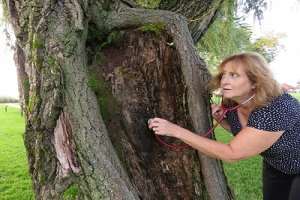By Sarah Rautio
Michigan State University Extension receives many inquiries through its MSU Extension Lawn and Garden Hotline about how home gardeners should deal with diseases, pests and weather conditions that negatively affect their lawns, plants, shrubs and trees. Plants can “get sick” from a virus, a bacteria, fungi, an insect and/or an environmental stressor, such as prolonged heat. When this happens, home gardeners seek a “plant prescription” to help heal the plant, such as “remove the pest and/or diseased parts” and “water during drought conditions.” When a person gets sick, their prescription may include similar recommendations, such as surgery and increased liquid consumption. Both these approaches are examples of trying to mitigate the damage that has already been done but there is another approach. By practicing “preventative medicine” sometimes the damage can be avoided entirely.

The American College of Preventative Medicine defines preventative human medicine as a means “to protect, promote, and maintain health and well-being and to prevent disease, disability, and death.” In other words, the healthier a person is in the first place, the more likely it is that they can prevent and combat disease. MSU Extension helps people stay healthy and reduce their risk of disease by providing free and low-cost health programs throughout Michigan.
Interestingly, this same concept can be applied to plants: the healthier the plant is in the first place, the more likely it is that it can prevent and combat disease. In fact, the actual steps to prevent and combat disease in humans are remarkably similar to those that work for plants, too, as described below: